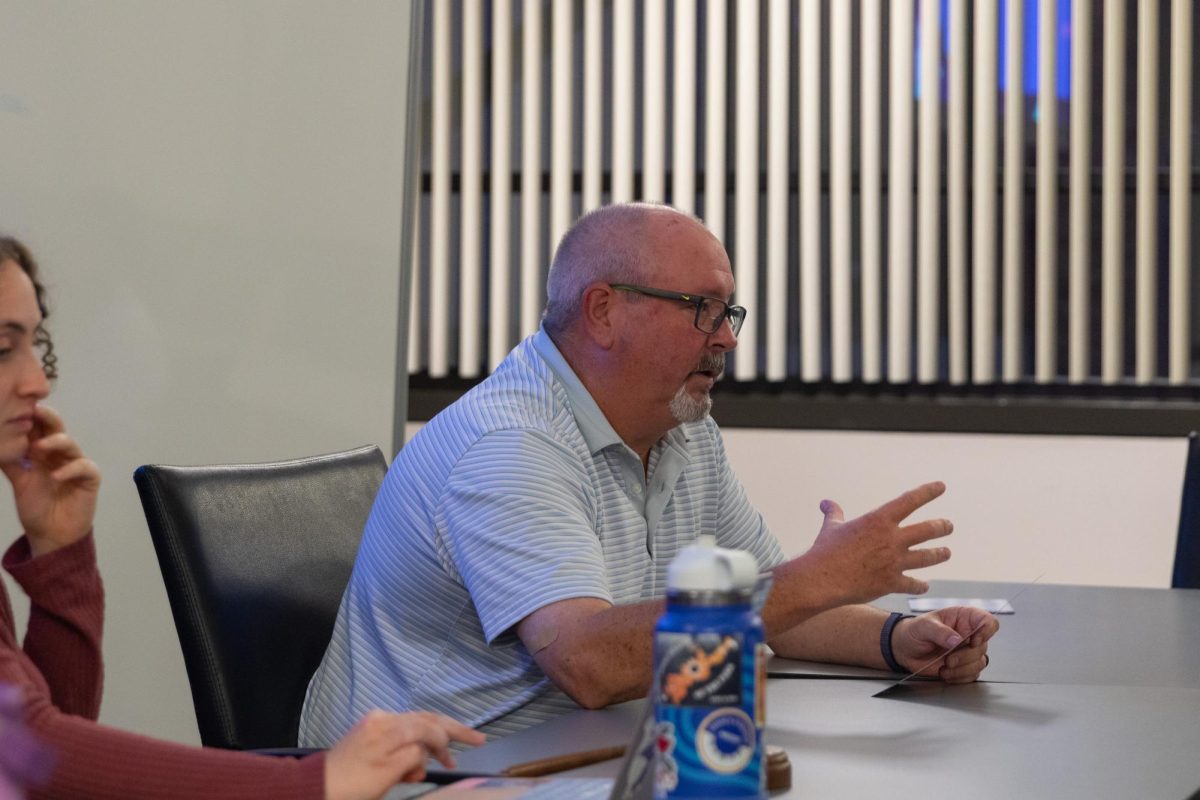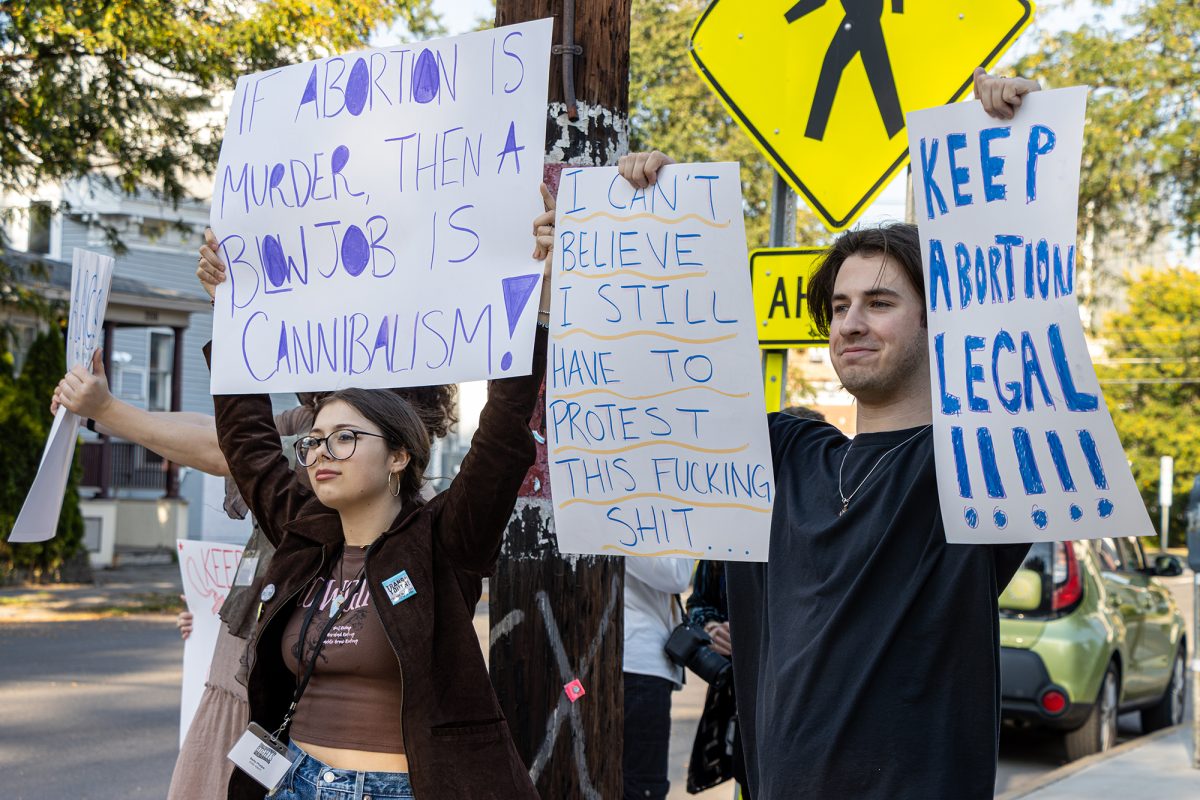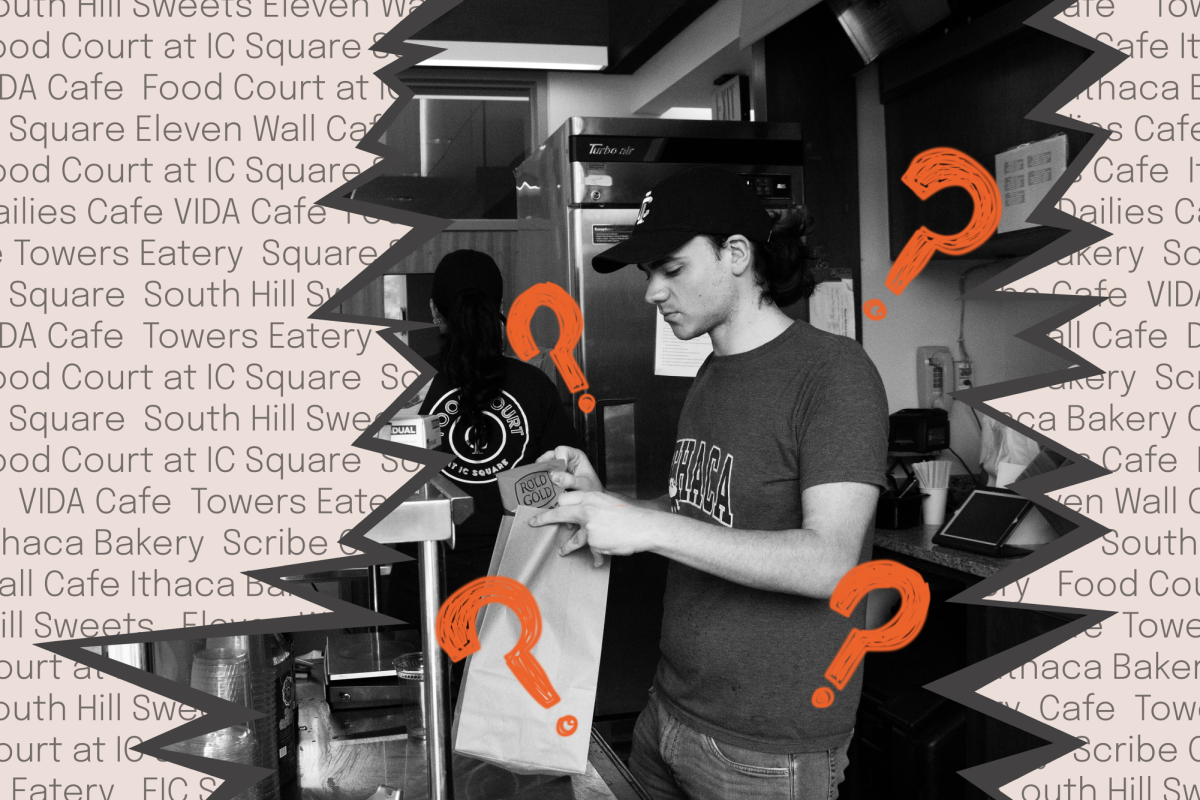The “What is Disability?” presentation took place Nov. 21. The event, which was run by Lynn Gitlow, associate professor of occupational therapy, and students of her Culture of Disability course, used statistics, history, law and other areas to explore different views and definitions of disability.
The students prepared an interactive presentation on the representations of people with disabilities in the campus community and popular culture. The presentation focused largely on some of the social and medical views of disability.
Junior Lindsey Adelstein was one of the presenters at the talk.
“We want students to know there is more to disability than what meets the eye,” she said. “There are different ways to define disability, and people identify in different ways.”
At the presentation, the speakers gave out two different colors of paper to the audience: one yellow, one white. The yellow sheet included a story about a young girl whom the audience agreed had a seemingly normal life. The other described a girl who had physical and mental disabilities, and the audience members said they expected that her life would be inhibited by her disabilities.
To the surprise of the participants, both were a description of the same person. This activity was meant to show the many perceptions created by different descriptions of disabilities.
The presentation also approached the issues of diversity on campus by showing popular images of “diversity” that were found online. Members of the audience were asked how many of these images they thought showed disability as part of diversity.
The point of this exercise was to show that there is no one look of disability because not all disabilities are visible.
Freshman Joshua Enderle said he attended the event because he wanted to learn more about how people work with disabilities on campus.
“I was wondering how they were dealing with that [on campus], being all hills and what not,” he said. “The school could be more accessible.”
Junior Eliza Dewart, another presenter at the talk, said one of their goals was to raise awareness of disability on campus because there are many barriers.
“Disability is just as much a part of diversity as race, gender, ethnicity, religion, sexuality, and I think that Ithaca is a very accepting campus,” Dewart said.
Dewart said the only way to get to the elevator from the first floor of the library is to go through the gallery, which is not open very late, so if people who use a wheelchairs wanted to print after the gallery closes they wouldn’t be able to.
“There is only one ramp to get into the library,” Dewart said. “It’s 10 paces from the end of the ramp to the handicapped door opener, and the door doesn’t stay open long enough to get in.”
Another focus of the talk was the impractical location of the college’s Office of Student Disability Services, which is currently located at the Towers Concourse. Though the Towers are accessible by ramp and elevator, they are still high up on the college’s hilly landscape.
At the conclusion of the talk, the presenters passed around some materials to show students a better way to talk about people with disabilities. The presenters stressed the importance mentioning the person before their disability. This is done by referring to a person as having a disability instead of calling someone a disabled person.
The presentation was able to dispel some social stereotypes as well as provide education on disability and living in a diverse community.
“Our campus has done a lot to make things accessible, but there’s always room for improvement,” Adelstein said.







